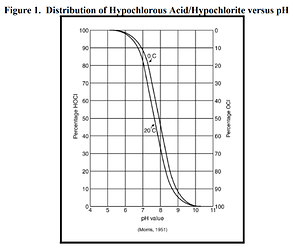I just got the e-mail blast from Front Row Ag. I used them for a couple rounds, but didn’t care for their phosphorus targets. Regardless, their feed schedule is right on and they are a solid company. They put out an excellent article on reservoir turbidity:
Tech Bulletin:
Reservoir Turbidity
Turbidity; Noun (Oxford Dictionary)
The quality of being cloudy, opaque, or thick with suspended matter
Summary:
Turbidity or “haziness” of the feed solution can be caused when bacteria or oxidizing chemicals react with certain metal micronutrients, forming suspended particles and changing the solution color. While this does not cause any functional problems with the fertilizer, it can be an aesthetic or cleaning issue. Turbidity can be avoided by following a few key best practices in water quality and sanitation.
Why does turbidity occur?
Front Row Ag contains iron, magnesium, manganese, and calcium at optimal levels for yield, quality, and phenotypic expression in cannabis. At the concentrations that cannabis requires, these metals can react in the feed solution with oxidizers and microbes. This will create suspended matter within the feed solution that can be brown, yellow, blue, milky, or clouded.
What does reservoir turbidity look like?
The following are the most common turbidity issues resulting in color changes, precipitates, or sludges.
- Manganese - when oxidized, this is going to lead to a brown turbidity.
- Iron - when oxidized, this is going to lead to either a pink or black turbidity or a combination of both colors.
- Magnesium, Calcium, Manganese - when fertilizer is added to solution incorrectly, these three ions will combine to form a gray/cream sludge.
Can turbidity affect plant health?
No, turbidity itself will not have any negative effects in the formulation, feed recipe, or plant health. Extensive lab testing confirms that there are no measurable changes in the available levels of these metals.
However, when the causal factor is poor water quality (due to low dissolved oxygen, low energy, stagnant water) or microbial overgrowth, those underlying factors may be a risk to the crop. Additionally, having a build-up in the reservoir or stock solution will cause additional labor for cleaning and sanitation.
What are the primary causes of turbidity?
The primary causes of turbidity are:
- Oxidizers (peroxides, PAA, zerotol, hydroxides, pH Up, etc) - Often introduced as part of a cleaning process or to maintain a sterile irrigation system.
- Microbial overgrowth in tanks / media filters - Carbon filters can become a breeding ground for bacteria if there is not a high enough concentration of oxidizing agents in the incoming water.
- Strong acids and bases (e.g. concentrated potassium hydroxide) - These will react with metals in solution if they are combined prior to dilution.
- Low water quality - Water that is stagnant, low in dissolved oxygen, or contains existing iron will be at high risk for turbidity. Poor water storage practices are often an underlying cause of the above issues.
- Reservoir age - RTU feed solutions in batch tanks should be kept for a maximum of 5 days.
What are the best practices for avoiding turbidity problems?
-
Oxidizers:
- Avoid using peroxides as part of the feed solution, as they are particularly reactive. Calcium hypochlorite is a less reactive alternative.
- If cleaning with strong oxidizing agents, particularly peroxides, be certain to triple-rinse reservoirs, batch tanks, and stock tanks with RO water before reintroducing feed solution. Trace amount of these cleaning agents can cause turbidity to develop.
-
Microbes:
- Verify that source water has some type of sanitizing agent - ozone, UV, chlorines, etc - prior to entering the carbon / media filter. This will keep the filter free of microbes, but the compounds will not pass through.
- Test source water regularly for microbial contamination.
-
Strong acids and bases:
- Ensure that injection systems have mixing chambers between acids/bases and fertilizer injector.
- Dilute acids/bases prior to injection, especially potassium hydroxide at high concentrations.
-
Low water quality:
- Stored water should be kept between 66 - 72 deg, should be circulating, and throughput rate should allow for regular turnover of storage tanks.
- Consider measuring and supplementing dissolved oxygen to 10-25 ppm.
- Test source water regularly for trace elements and changes to chemistry.
-
Reservoir age:
- Batch tanks should be sized so that the full volume is cycled through every 3-5 days at maximum. Cone bottoms tanks are preferred to prevent the solution from collecting at the bottom of the tank.
